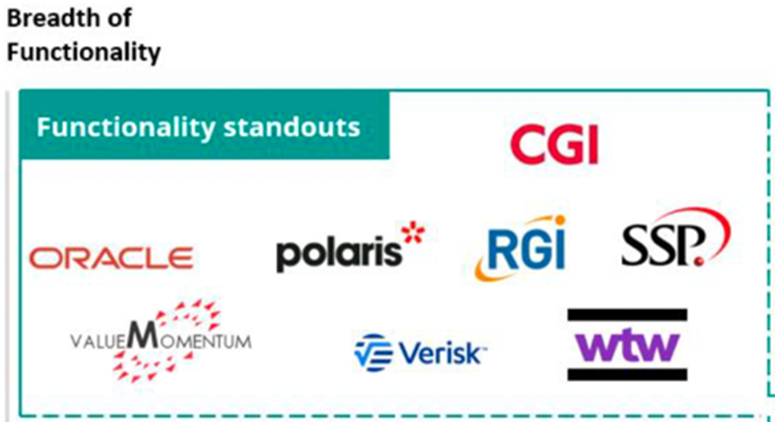“We are delighted that SSP’s Precision Engine rating engine has been ranked so highly by such a pre-eminent global research and advisory firm,” says Leslie Muthen, Head of Territory, Africa. “We share the rating quadrant with some highly regarded companies on the world technology stage.”

Celent Technical Capability Matrix
Source: Insurer Stand-Alone Rating Engines — Global Edition; 2023
Rating packages typically refer to software systems or modules used to analyse various factors related to a specific risk or set of risks and calculate an appropriate rate or premium based on that analysis. Rating automation can be integrated within a policy administration product or facilitated by a stand-alone engine, both executing the necessary calculations for standard insurance products.
Stand-alone rating engines tend to rely on mathematical expressions, complex algorithms and intricate operations, such as driver assignments, far more than administration applications do. However, rating engines within administration solutions are continually advancing in complexity and performance. Consequently, several suite solution providers now offer their rating functions as stand-alone solutions.
Stand-alone rating solutions often encompass a broader set of features, occasionally including product creation and management capabilities. Recognising the pivotal role of rating in product performance, it is logical to incorporate functionality that extends beyond rate derivation, enabling users to construct and maintain other product attributes such as rules and forms.
According to the report, leading carriers have started integrating more behaviour-based products and services into their product management strategies. Furthermore, the adoption of multivariate rating algorithms is on the rise as product managers harness predictive analytics to inform pricing strategies across their businesses.
Smaller carriers concentrate on streamlining rate management and prioritizing speed-to-market by enabling swift updates of rates and algorithms. Across the board, carriers are expanding channels and incorporating online rating capabilities for agents, extending this accessibility to policyholders. The active mergers and acquisitions market underscores organisations' pursuit of strategic acquisitions.
There is a growing need for external, stand-alone rating engines, particularly in organisations that still rely on legacy systems.
Carriers with multiple policy admin systems face challenges such as inaccuracies, duplicate data entry, and redundancy when implementing rating changes across platforms. For carriers offering web-based quoting, high volumes of quotes may impact the performance of policy admin systems if the website directly interacts with it.
External rating engines provide a solution by allowing carriers to construct rating algorithms once and distribute them across various applications – web quoting, comparative raters or policy admin systems. This approach enhances productivity, accelerates speed to market, offers greater flexibility and enhances businesses’ ability to introduce enhancements.
Product architectures featuring inheritance facilitate the rapid extension of products across jurisdictions. Built-in modelling and testing tools enable faster and more comprehensive analysis of proposed rate changes.
For more information on the SSP Precision Engine rating engine, click here.

